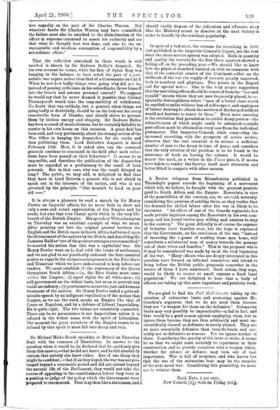In spite of a bad start, the returns for recruiting
in 169:1, just published in the Inspector-General's Report, are the best since the short-service system was adopted. Both in quantity and quality the recruits for the first three quarters showed a falling off on the preceding year.—We should like to know how the physical standard insisted on with us compares with that of the conscript armies of the Continent.—But on the outbreak of the war the supply of recruits greatly improved, both in numbers and physique. Two points in the Report call for special noti,a2. One is the very proper suggestion that the recruiting offices should be removed from the "low and squalid" streets where they are now frequeutly placed, to re- spectable thoroughfares where "men of a better class would be enabled to enlist without loss of self-respect, and employers of labour desiring to obtain the services of discharged soldiers would not hesitate to resort to them." Even more amazing is the revelation that permission to exhibit Army posters—the attractiveness of which might easily be enhanced—outside post-offices must be obtained in every ease from the individual postmaster. The Inspector-General, while connecting the increased recruiting with the prospects of active service, observes that the real essential is to attract a sufficient number of men to the Army in time of peace, and considers that the only solution of the problem is to be found in the assurance of work on leaving the colours. It would be nearer the mark, as a writer in the Tinics puts it, if means were taken to render the Service itself more attractive and better fitted to compete with other careers.


































 Previous page
Previous page